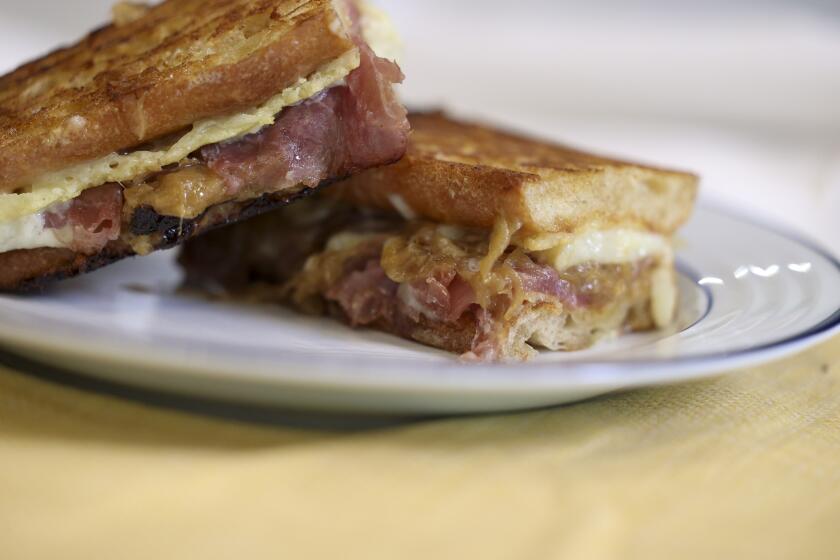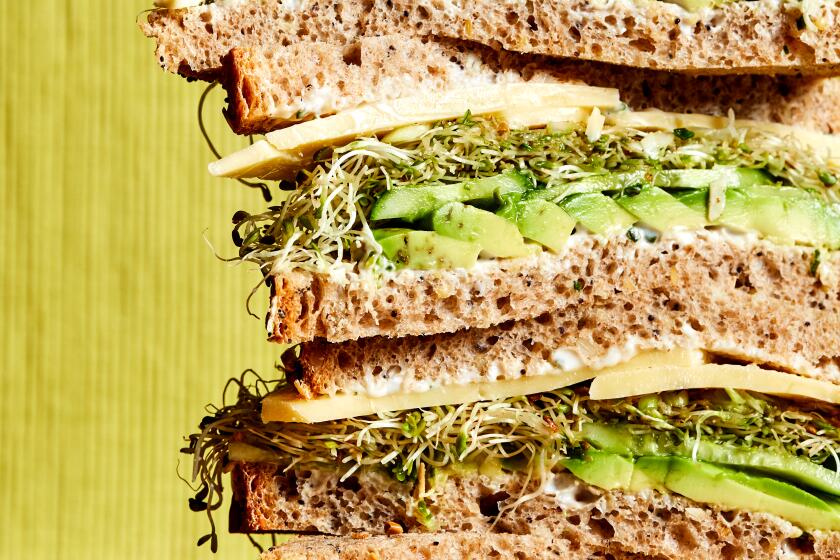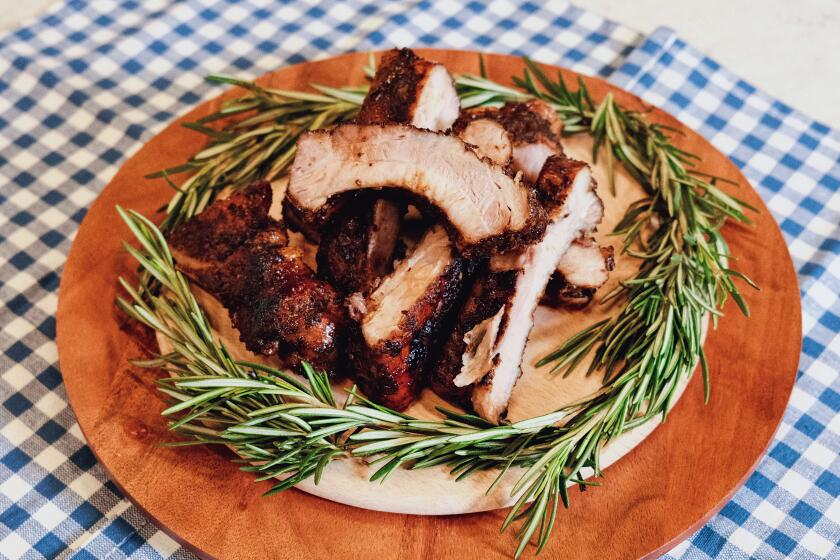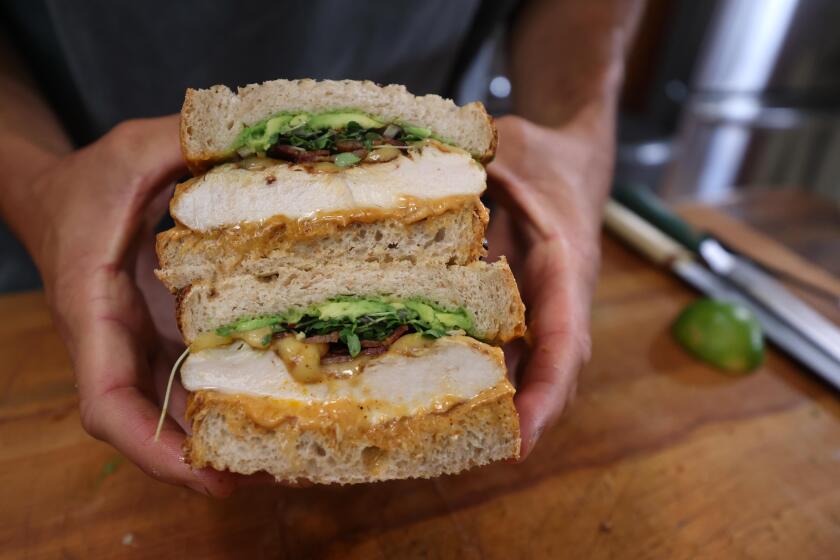How to tell good fat from the bad
Fat is no longer synonymous with a four-letter word in nutrition circles, but knowing how much to eat -- and what kinds -- can be difficult.
Take the latest dietary guidelines. They recommend eating 25% to 35% of daily calories as fat and urge limiting saturated fat (found mostly in animal products such as meat and cheese) to 7% of calories, and trans fat (found in many fried foods and baked goods) to less than 1%.
Just try doing that at dinner without using a calculator.
Now a new Web-based tool could make it easier. The American Heart Assn. has unveiled My Fats Translator, part of an interactive site designed to help take the guesswork out of eating fat and encourage smarter fat choices. (In a bit of food irony, the initiative has been underwritten with part of an $8.5-million legal settlement from McDonald’s. The fast-food chain was sued in 2003 for failing to tell the public that it had reneged on a promise to switch to healthier oils to cook its French fries.)
The goal is to “help people become aware of the type of fat they are consuming and to help them go out of their way to restrict trans fat and saturated fat,” says Alice Lichtenstein, chairwoman of the American Heart Assn.’s nutrition committee and professor of nutrition at Tufts University in Medford, Mass.
That’s because both of these unhealthful fats are linked with an increased risk of heart disease, as well as other health problems. In March, National Cancer Institute researchers reported a link between higher fat intake and invasive breast cancer in older women past menopause. Women at greatest risk in the study, which was published in the Journal of the National Cancer Institute, averaged 40% of calories as fat and ate the most saturated fat.
To learn how many grams of fat you need to eat, go to www.AmericanHeart.org/FacetheFats and type your age, gender, weight, height and physical activity level into the My Fats Translator. It does the math for you. So a 45-year-old sedentary woman who is 5-feet-6 and weighs 150 pounds learns that she should aim for 1,910 calories daily and 53 to 74 grams of fat, including 14 grams of saturated fat and 2 grams of trans fat.
But how does that translate to food?
Here’s where the new tool gives answers using popular food as examples and then offers a few smarter choices in each category. It shows that a cheeseburger from a fast-food restaurant delivers 27% of the daily calories for that 45-year-old sedentary woman and provides more than a third of her daily fat as well as a day’s worth of saturated and trans fat. If she skipped the cheese and ordered a hamburger instead, she could save 100 calories and cut unhealthy fats nearly in half.
Other smart choices include swapping two slices of deep-dish pepperoni pizza for two slices of regular pizza with sausage, green peppers and mushrooms. That switch cuts a third of calories and half the fat grams, according to My Fats Translator. Choose a thin-crust pizza with ham, green peppers and mushrooms and cut the calories in half again. Plus, you shave an extra 5 grams of saturated fat.
It’s seeing the power of those kinds of easy substitutions that the American Heart Assn. hopes will encourage consumers to make wiser choices. American adults consume about 2% of their total calories from trans fat -- twice the recommended amount -- and are “eating almost seven times more saturated fat than trans fat” (also much higher than advised), says Robert Eckel, immediate past president of the American Heart Assn.
“Consumers,” Eckel says, “are not well informed about fat.” A 2006 public opinion poll of 1,000 adults conducted for the American Heart Assn. found that 84% of consumers had heard of trans fat -- but only about half could correctly cite the health effects of trans fats and identify foods that contained trans fats. By comparison, about 70% of those polled could correctly identify at least three foods with saturated fat.
The AHA hopes to increase the public’s fat knowledge with the Bad Fats Brothers, two cartoon characters that they’re also unveiling online to help teach the differences between bad and good fats. “Trans” and his older brother, “Sat,” appear in a webisode as wisecracking fellows that “can break your heart” if you let them.
More to Read
Eat your way across L.A.
Get our weekly Tasting Notes newsletter for reviews, news and more.
You may occasionally receive promotional content from the Los Angeles Times.










